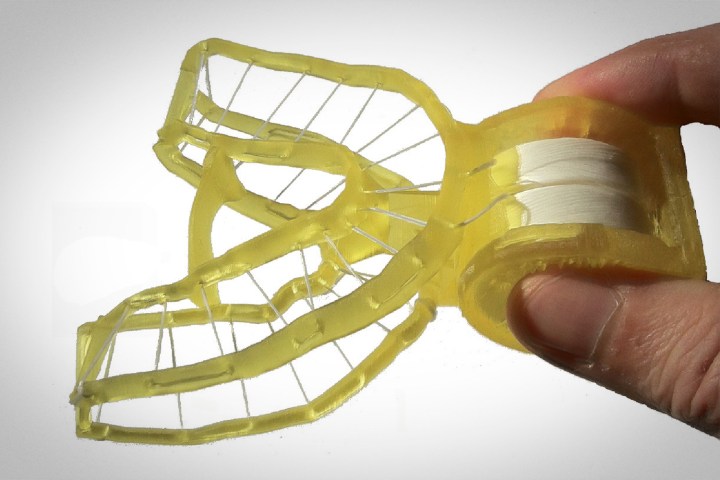
The idea, essentially, is to use a 3D scan of a customer’s mouth to create a special flossing wireframe, onto which four rolls of dental floss are fed. The result is a device that, when a user closes their mouth over it, flosses every gap in their teeth with impressive precision. No effort required.
“Flossing is so extremely important,” Chris Martin, a spokesperson for Blizzident, told Digital Trends. “Dirt between teeth and in the “gingival sulcus,” the space between gums and teeth, cannot be reached and removed with brushes. If people don’t floss, dirt stays there for weeks and months, causing bad breath and cavities. Therefore, dentists recommend daily flossing. But only between five percent of people in Europe, and 20 percent of people in the U.S., do it because it is difficult and time consuming. You should also do it before sleeping, when people are usually too tired. Instead, people can now simply grip their tailored 3D-Flosser, bite into it, chew a little, and they are done with perfect flossing of their teeth within five seconds.”
It’s a concept that Martin is convinced is going to improve oral hygiene for us all. To get hold of one of Blizzident’s 3D-Flossers, you first need to get either a 3D scan or dental impression taken of your teeth. (Or, if you want best of both worlds, you can scan an existing dental impression.) You then send the information to Blizzident, which is based in Europe, and it will manufacture and mail out your custom flossing device for 199 euros ($232), plus postage.
“The 3D-Flosser lasts many years,” Martin continued. “The only thing that ever has to be replaced are the floss rolls, which cost four euros, after 500 usages.”
The only bad bit? Presumably explaining this odd-looking contraption to whoever spots it by your bathroom sink. Although, heck, you may just wind up convincing them that it’s a good idea for them to buy one, too.


